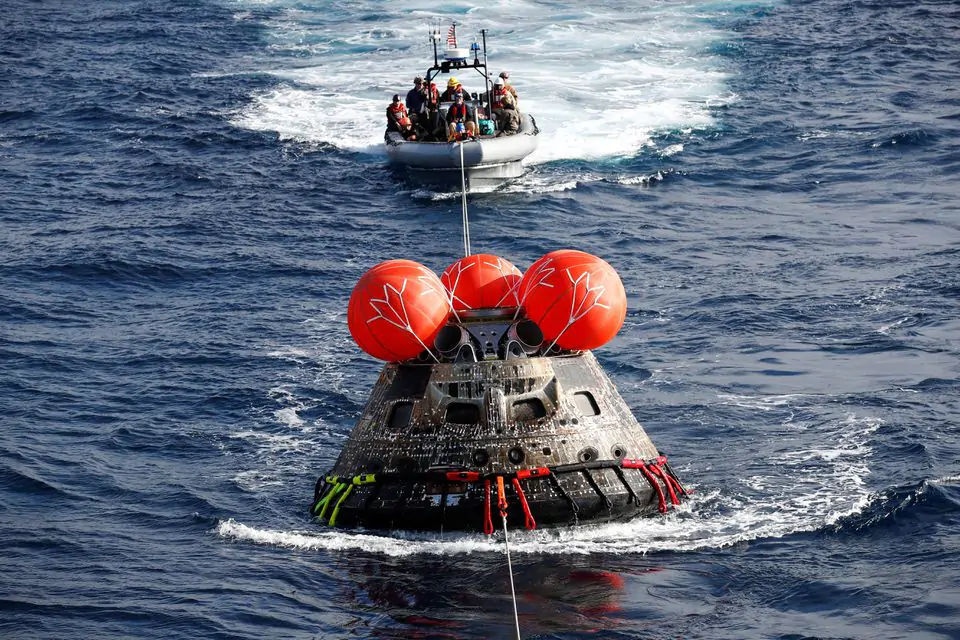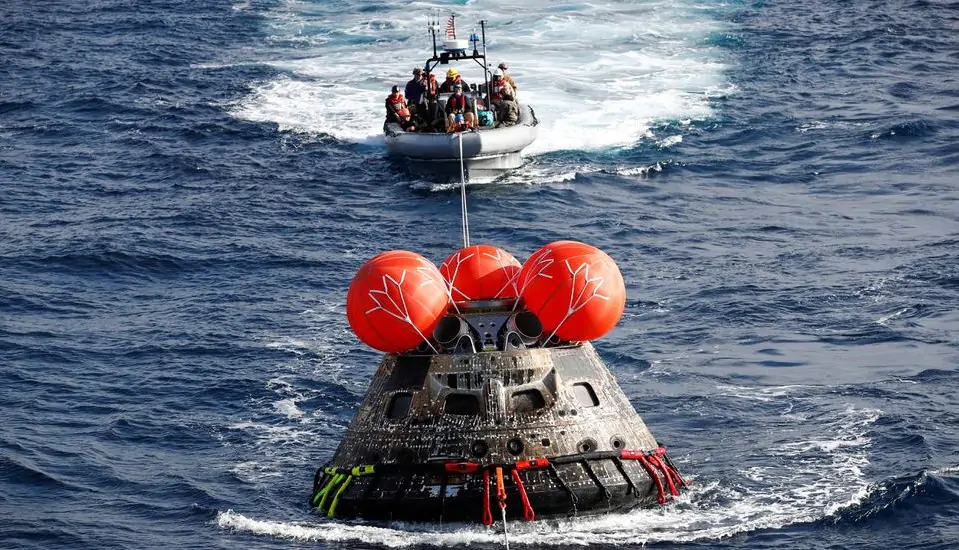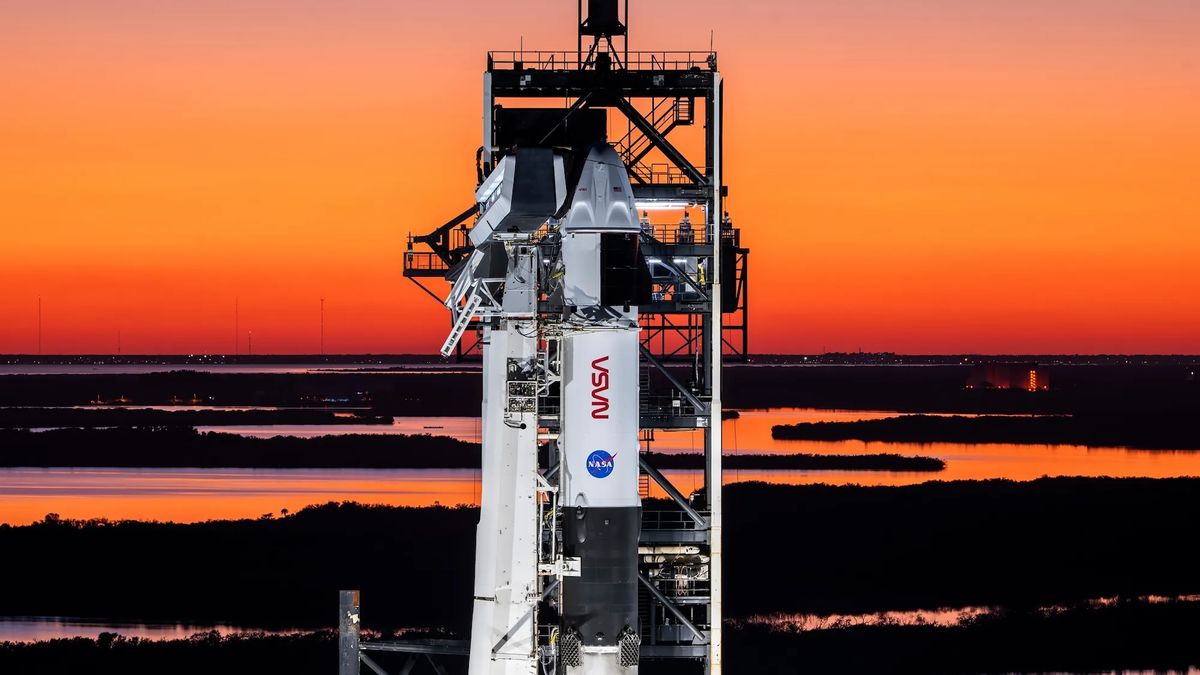NASA’s new multibillion-dollar spacecraft successfully returned from the moon Sunday, taking the agency one step closer to getting U.S. astronauts back on the moon by 2025.

NASA’s Orion capsule barreled through Earth’s atmosphere and splashed down in the Pacific ocean on Sunday after making an uncrewed voyage around the moon, winding up the inaugural mission of the U.S. agency’s new Artemis lunar program 50 years to the day after Apollo’s final moon landing.
Before NASA launches its first crew of Artemis humans to orbit the moon in the coming years, the gumdrop-shaped Orion capsule touched down in the water at 9:40 a.m. PST (1740 GMT) off Mexico’s Baja California peninsula, showcasing a high-stakes homecoming.
What NASA’s Artemis I mission manager said?
After splashdown, NASA’s Artemis I mission manager Mike Sarafin told reporters, “This was a tough mission, and this is what mission success looks like.” He added that his team didn’t immediately identify any problems with Orion’s return from space.
How it was landed?
Orion was inspected for about five hours after splashdown by a U.S. military helicopter and a group of speed boats before being placed into a U.S. Navy ship for a trip to San Diego, California.
The splashdown capped a 25-day mission:
The splashdown capped a 25-day mission less than a week after passing about 79 miles (127 km) above the moon in a lunar fly-by, and came about two weeks after reaching its farthest point in space, nearly 270,000 miles (434,500 km) from Earth.
The capsule’s speed was reduced from 24,500 mph (39,400 kph) by atmospheric friction to 325 mph before two sets of parachutes helped it drop down to an anticipated 20 mph at splashdown. According to Navias, the capsule’s descent rate was “excellent.”
The spacecraft launched on Nov. 16 from the Kennedy Space Center in Cape Canaveral, Florida, atop NASA’s massive next-generation Space Launch System (SLS), the largest rocket the agency has produced since the Saturn V of the Apollo era and now the most potent in the entire world.
Months will be spent by mission engineers reviewing the Artemis I mission’s data. As early as 2024, a crewed Artemis II trip to the moon and return is possible. A few more years later, Artemis III will make the program’s first manned lunar landing, which will include a woman.
NASA expects to name its crew of astronauts for the Artemis II mission in early 2023, NASA’s Johnson Space Center director Vanessa Wyche told reporters.
At a briefing last week, Sarafin stated, “It is our top priority.” No arc-jet or aerothermal facility on Earth is able to replicate hypersonic re-entry with a heat shield this massive, according to the statement.





One thought on “NASA’s Orion capsule returns to Earth, capping Artemis I flight around moon”